Why lifecycle marketing matters
At its core, lifecycle marketing is a customer-centric strategy that keeps people engaged at every touchpoint—from the first encounter with your brand to the moment they become repeat buyers (and even beyond).
It follows a continuous process of engaging, retaining, and re-engaging customers through personalized, timely interactions. This approach helps businesses drive customer retention, upsell and cross-sell, and increase customer lifetime value.
Some more benefits of lifecycle marketing include streamlined communication, competitive advantage, increased brand reputation and increased customer loyalty.
Read more about lifecycle marketing and it's benefits in the complete guide:
6 examples of lifecycle marketing from top brands
Sometimes the best inspiration comes from companies that have already mastered the art of lifecycle marketing. Let’s take a look at how some of the best lifecycle marketing examples from the world’s most well-known brands, at different stages:
Spotify
Stage: Acquisition
Customer acquisition is the first stage and brands go to extreme lengths to make a memorable first impression. Spotify goes the extra mile during onboarding by immediately tailoring recommendations based on a new user’s music preferences. The initial experience feels personal and relevant, setting a foundation for user satisfaction and retention from the start. Within the first few minutes of a customer’s onboarding, Spotify customizes playlists, making sure each new customer feels valued and engaged, boosting the chance that they’ll stick around.
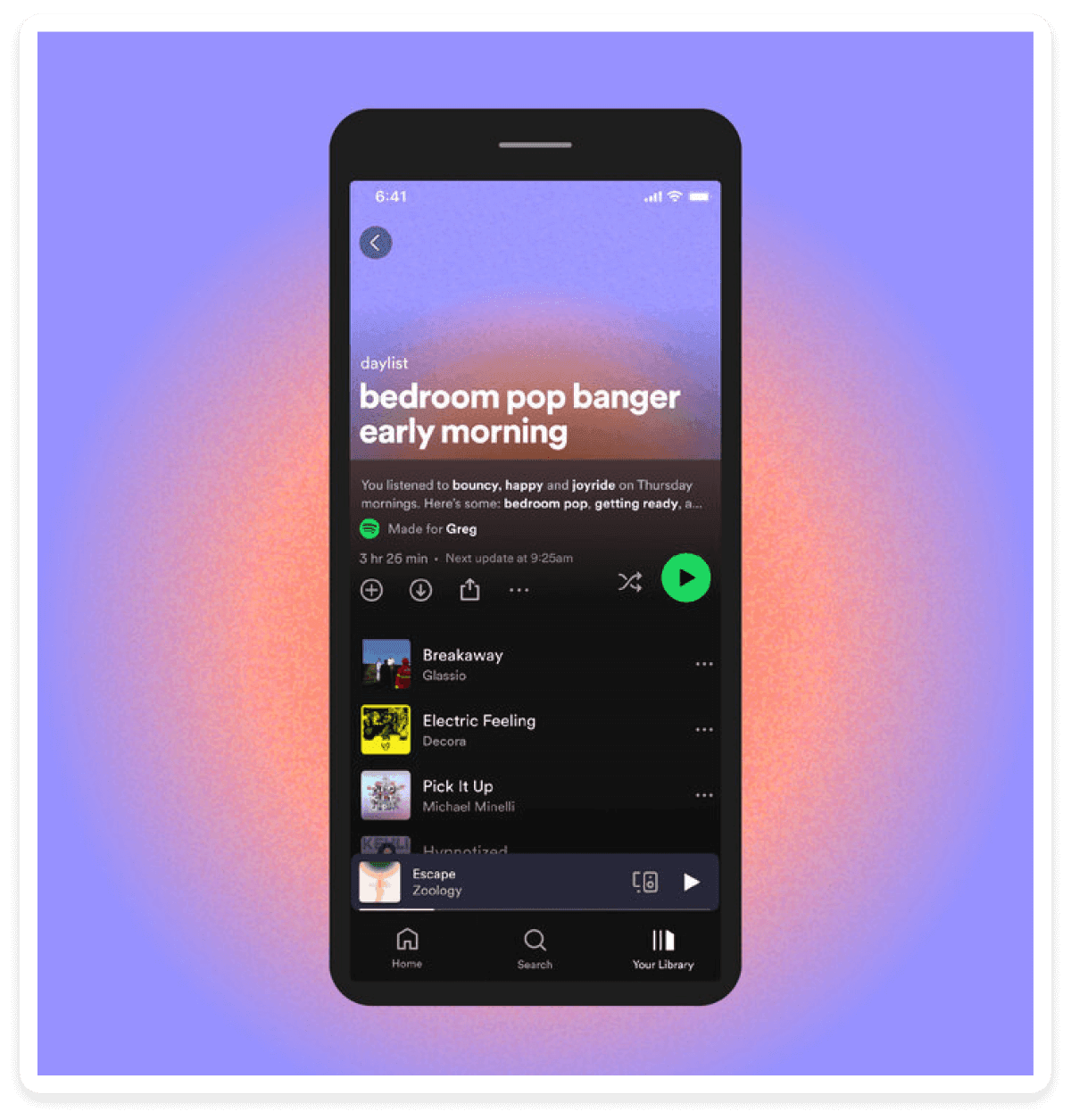
Source: The New York Times
Netflix
Stage: Engagement
Once customers are onboarded, it’s time to nurture these relationships by engaging the customers and providing consistent value. Brands run engagement campaigns to keep customers interested and involved through targeted content that speaks to their needs.
Netflix uses a powerful customer data-driven recommendation system, the ‘Because You Watched’ feature, to keep users hooked by suggesting new shows or movies based on their viewing history. Each recommendation makes the customer feel like it’s exclusively made for them. This keeps customers feeling understood and returning for more.
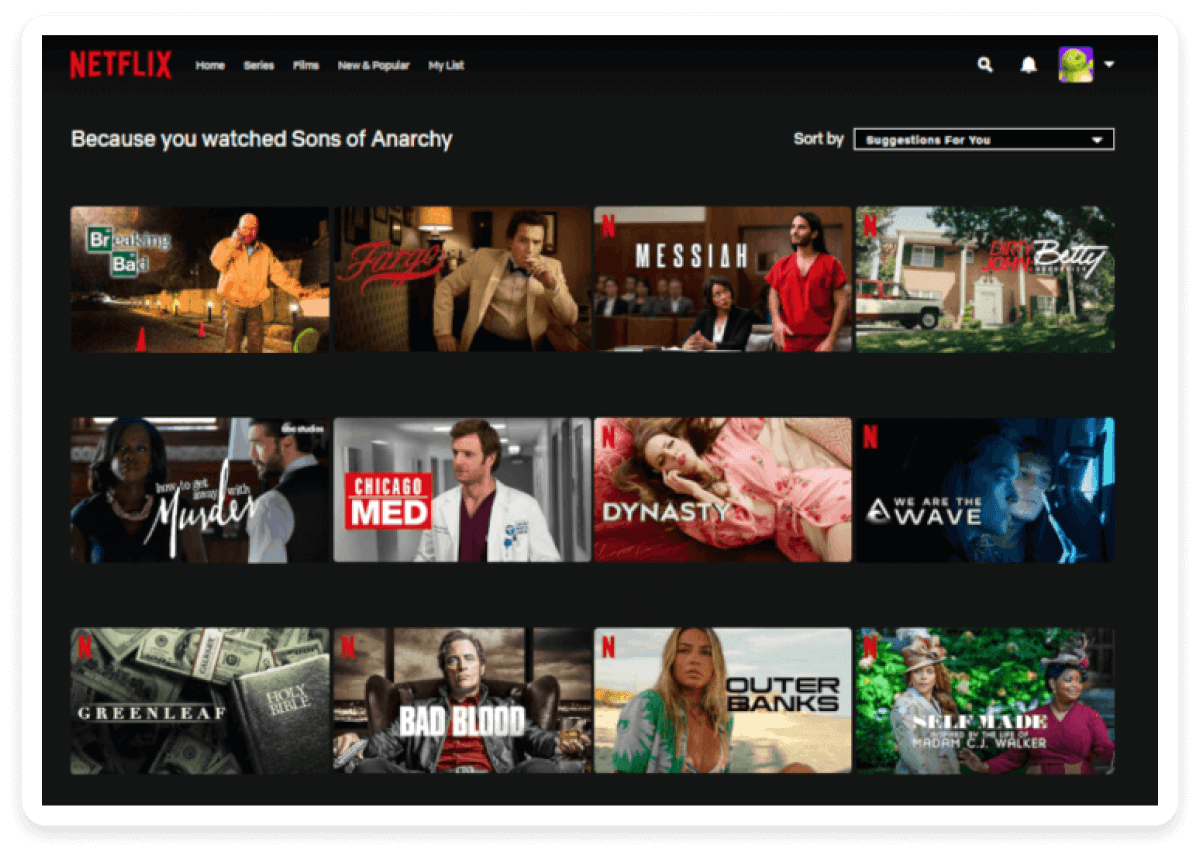
Source: What’s on Netflix
Duolingo
Stage: Monetization
At the monetization stage, brands encourage customers to make their first purchase or upgrade to premium services. Many brands rely on making well-timed, relevant offers during this stage.
Duolingo occasionally nudges users with limited-time discounts to upgrade their subscriptions. By offering discounts at critical moments, such as when a user reaches a learning milestone, Duolingo subtly encourages users to make the jump from free to paid without seeming pushy.
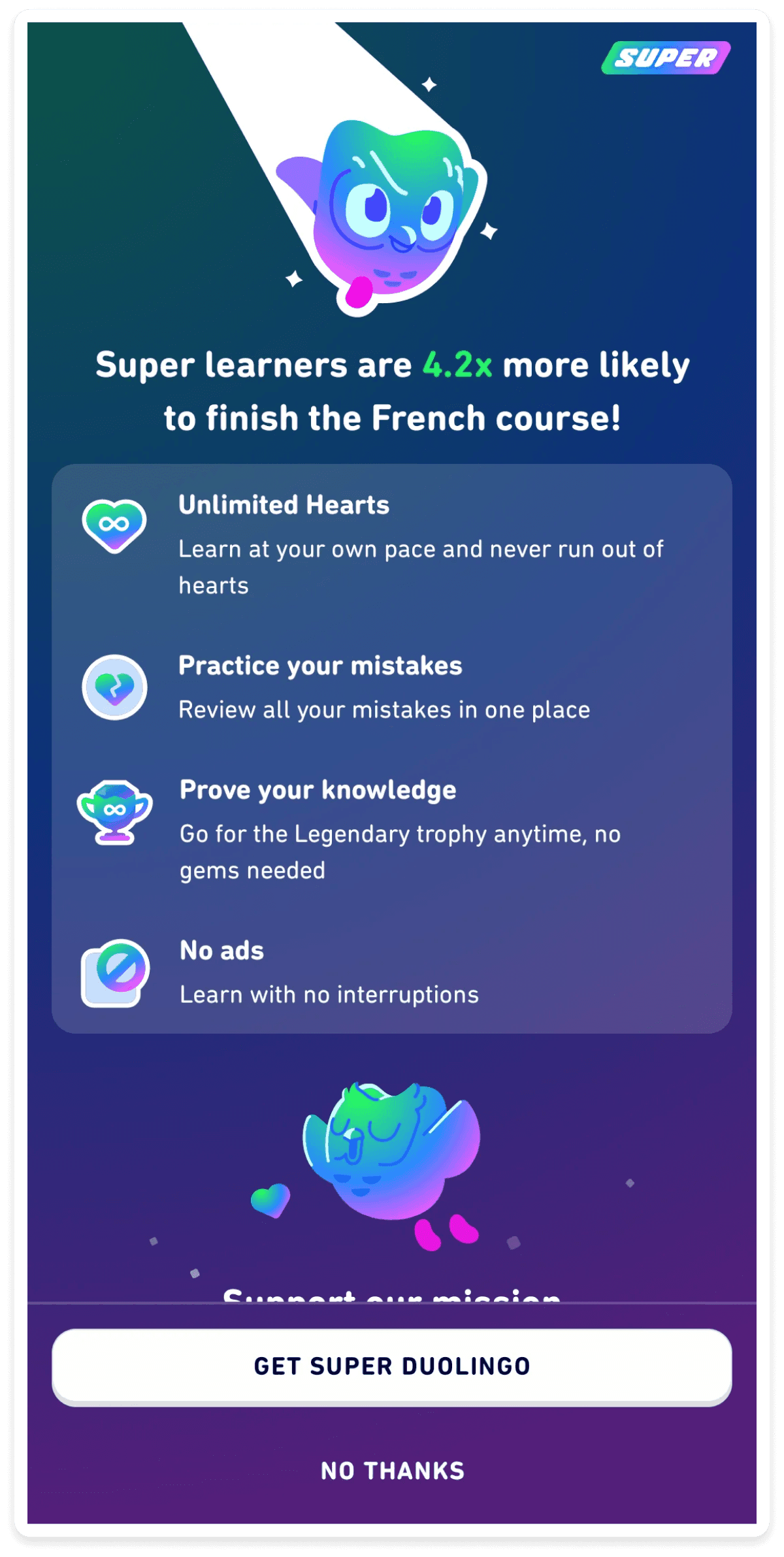
Source: Duoplanet
Sephora
Stage: Retention
The retention stage is the backbone of lifecycle marketing. Keeping customers engaged and loyal is often more cost-effective than new customer acquisition, and it’s where long term growth shines.
Sephora’s loyalty program, Beauty Insider, is legendary for a reason. The program rewards customers for purchases, reviews, and other forms of engagement, making them feel valued and appreciated. Customers who participate in the program also receive personalized recommendations and early access to sales, ensuring they have reasons to keep coming back.
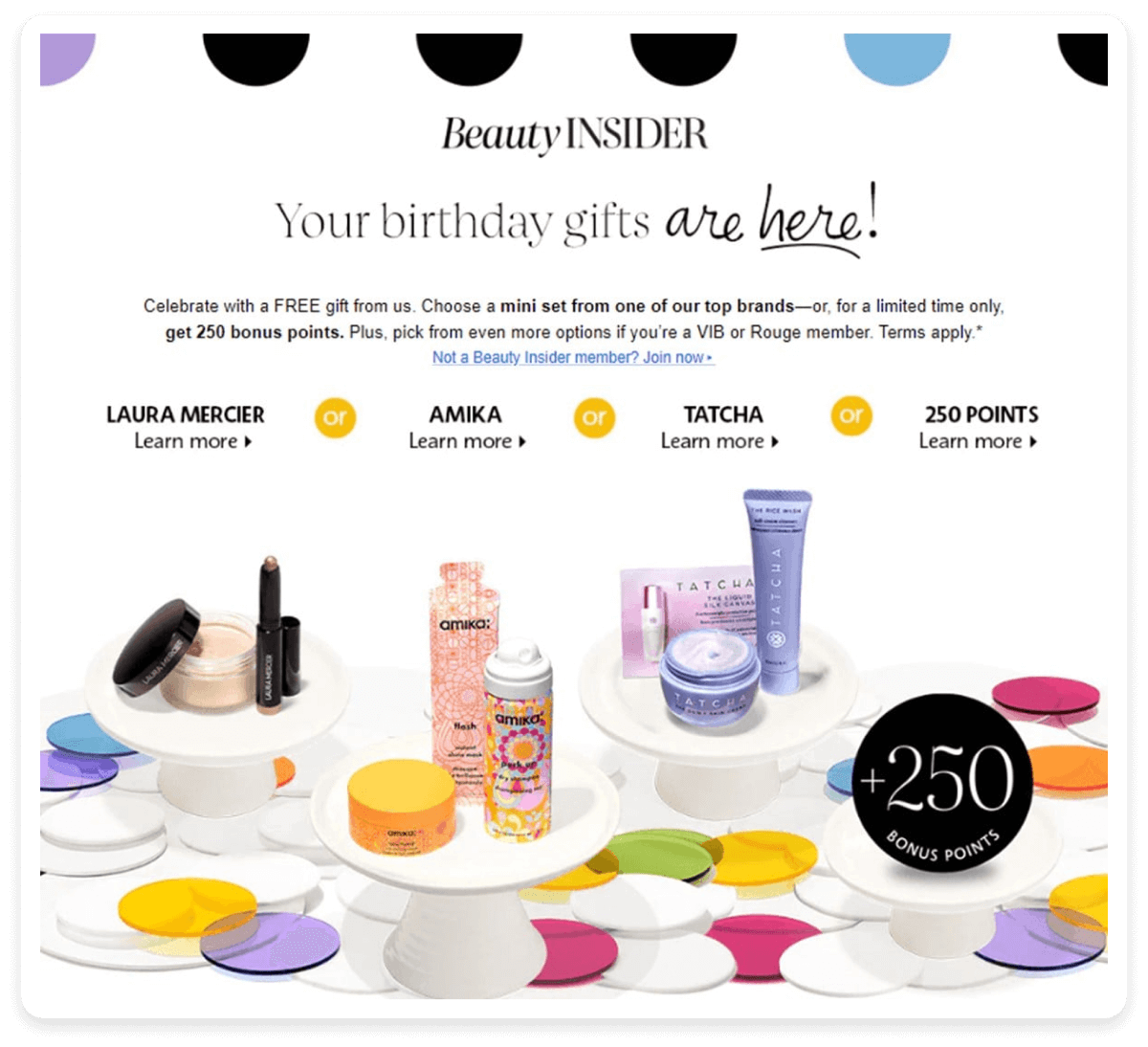
Source: Antavo
Headspace
Stage: Re-engagement
Every business has inactive customers—but they don’t have to stay that way. Re-engagement campaigns rekindle interest and make your disengaged customers feel valued again.
When users haven’t engaged with the app for a while, Headspace uses re-engagement email marketing to encourage meditating and offers simple prompts to help users resume their use. The message is warm and encouraging, and it gently nudges users to return without being too direct.

Source: Active Trail
Starbucks
Stage: Advocacy
Advocacy is the final stage of lifecycle marketing where satisfied customers become loyal brand advocates, sharing their positive experiences with friends, family, and followers.
Starbucks encourages its loyal customers to invite their friends by offering them rewards for referrals. Not only does this tactic bring in new customers, but it also strengthens the bond with existing ones by letting them participate in the brand’s success story.
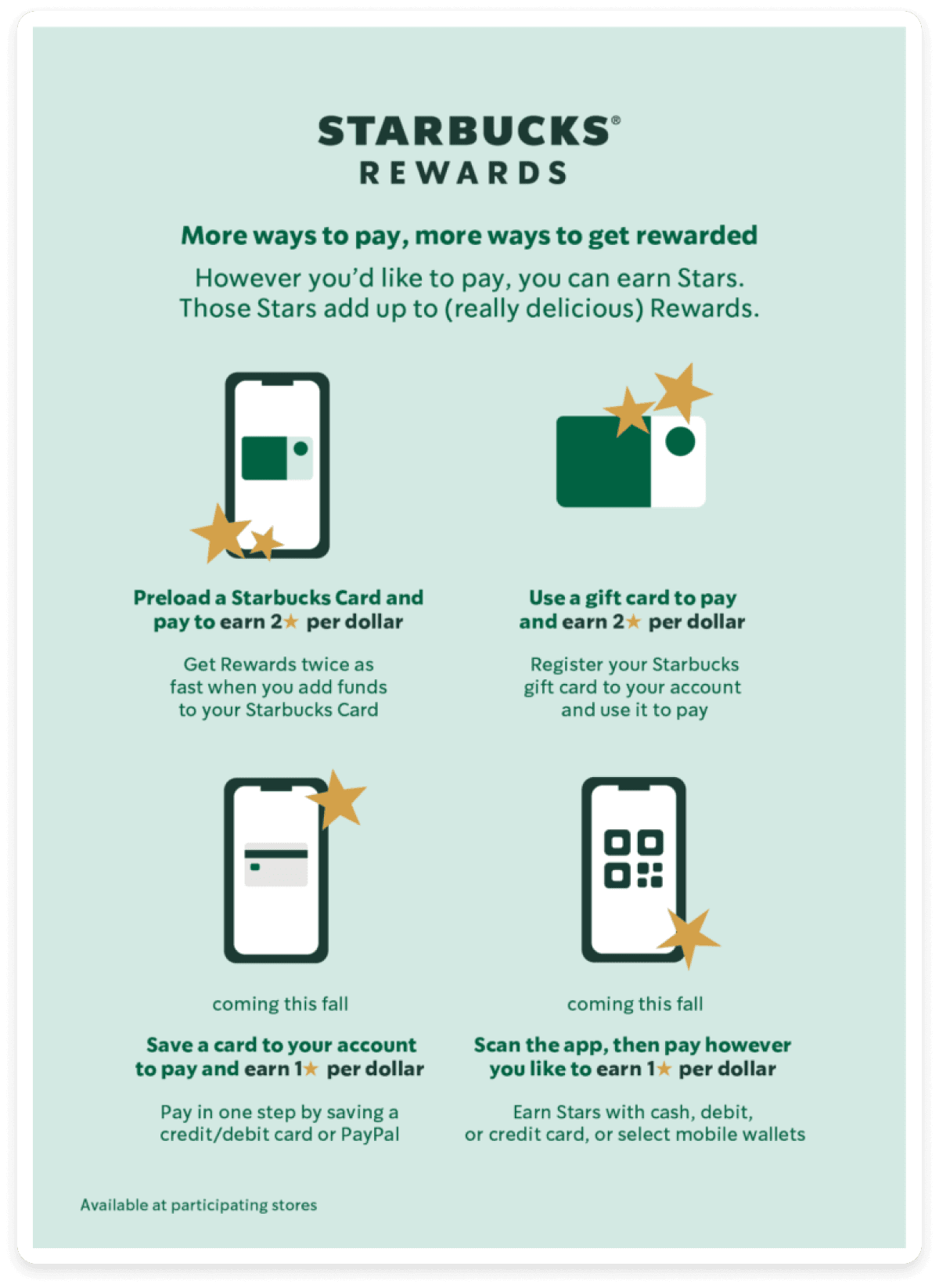
Source: Open Loyalty
4 ways to power your lifecycle marketing with Mailmodo
As a brand, you can use Mailmodo at various stages of your lifecycle marketing plan to help you in lifecycle marketing. Check out some cool features of Mailmodo that can help you.

Audience segmentation
You can use Mailmodo’s dynamic audience segmentation feature that allows you to set up segmentation rules once and have your audience segmented as and when they meet the criteria. This ensures that your audience is correctly segmented at any given time. This also allows you to tailor communication to reach customers at different points in the entire customer journey and ensure each interaction feels personalized.
Personalization
Personalization isn’t just a luxury today; it’s a necessity. Every well-known brand in the examples above has made use of personalized content to drive engagement. Mailmodo allows you to personalize emails, using custom subject lines and content using placeholders for different attributes, making users feel engaged and exclusive.
Email interactivity
Many brands lose customers during the customer journey for a number of reasons, especially if the application or purchase options seem complicated. This is where AMP-powered emails come in. Interactive emails allow direct customer interaction within the email itself—making the entire experience seamless and engaging and encouraging customers to take action immediately.
Email automation
Automating workflows and setting up trigger emails allow you to send the right email at the right moment to keep customers engaged and make the most of the opportunity. This guides customers along the entire journey—whether it’s onboarding, retention, or re-engagement.
Aiza Coronado, founder of CaaSocio, used Mailmodo to focus on data points for onboarding flows. This helped her maximize customer engagement and retention, ultimately transforming the company’s onboarding process into a significant revenue source, generating 2x revenue. Read the full case study here..
Create and send interactive emails without coding in minutes
Key takeaways
Lifecycle marketing is no longer optional—it’s essential to build meaningful customer relationships, increase retention, and drive long term value. With the right lifecycle marketing plan, you can onboard new users, engage visitors, re-engage lapsed customers and drive repeat purchases and business growth.
You can learn from the lifecycle marketing examples we've discussed in this article and take inspiration from their strategies to design new strategies for your brand. You can also use Mailmodo to power your lifecycle marketing efforts and use its unique features as we've discussed above. So start today and take your brand to new heights.


















